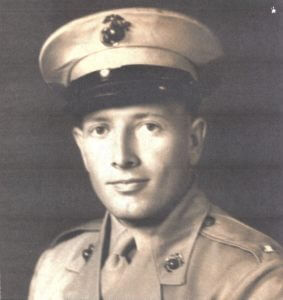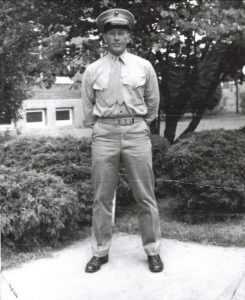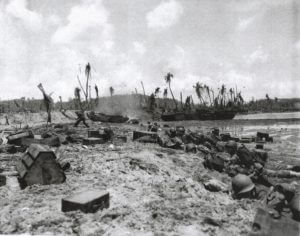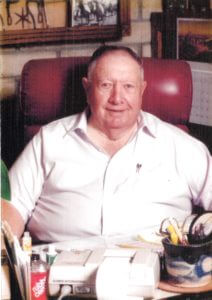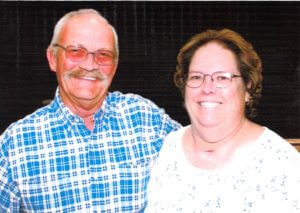Albert Howard Smith, Marine Corps Captain…WWII
Albert Howard Smith, Marine Corps Captain, WWII
By Ken Stanford
Albert Smith was born in Arizona in 1918, and after a short experiment with college, joined the U.S. Immigration Border Patrol in 1941, where he served as an agent near El Centro, California. During his time as a Border Patrol agent, he was involved in apprehending illegal immigrants, smugglers, and the attempted arrest of a murder suspect who resisted arrest with a shotgun and was killed before the arrest could be affected.
He was camped out in the desert while on duty, in December of 1941, when he and his partner heard about the attack on Pearl Harbor over their short-wave radio. Over his protests, because of the shortage of agents, he was not released to join the military until January of 1943, when he enlisted in the United States Marine Corps. After completing basic training at Camp Le Jeune, North Carolina, and then Officer’s Candidate School at Quantico, Virginia, he was transferred to Camp Ellis, San Diego as a Second Lieutenant.
Lieutenant Smith’s first overseas deployment was to the South Pacific as a Platoon Leader, and he was promoted to First Lieutenant. His unit, “B” company, of the 11th Motor Transport Battalion was sent to Guadalcanal in the Solomon Islands as force replacements. While there, they were trained and familiarized with the new amphibious craft…the “Duck”. This six-wheeled vehicle was capable of being loaded on ships with troops or supplies, motor its way to shore, then traverse on land to be unloaded. Not having the need to unload the supplies or personnel to a land vehicle for transport to their destination was an important advantage given by this new craft. Following their training in the operation of the vehicles, the unit was sent to its first combat mission, Guam, in the Mariana Islands group, in July 1944. Lt. Smith had nine ducks in his platoon.
In the narrative below, he refers to “Betty’s”: These were Japanese land-based bombers with minimum arsenal-carrying capability, one bomb or one torpedo. He also refers to an “LST”. An LST is a ship whose function was to support amphibious operations and deliver tanks, vehicles, troops and supplies. It had the capability of unloading through a ramp which opened at the bow. His own words best tell the story of that experience.
“We were under severe attack in convoy prior to landing in Guam. Six Betty’s jumped us and attacked with torpedoes. They sank one of our ships to our port but one of our guns got him as he pulled up over our bow. Gunner Newsome and I were standing together on the deck of the LST watching the torpedo come in. It missed our bow and hit the ship on our portside. I can still see the pilot looking at us as he pulled up over our ship before our guns caught him”.
When the convoy reached its destination, they began offloading in the 9th attack wave. Lt. Smith’s platoon was transporting 105 Howitzers and jeeps to shore. Several of the ducks were hit, and one burned as they approached the beach. The ducks were all heavily loaded.
“The bad part was we could only carry four rounds of ammo with the gun (105 Howitzer), gun crew, driver and I.”
“The duck has a pump, but not too big, so you had to be careful or it all goes down. When we got unloaded, the gun (105 Howitzer) was pulled to its firing position by a jeep, the duck returned to our area to pick up wounded that were sent to a hospital ship, and then to the ammunition ship for loads of ammo for the 105’s….back and forth, each duck as they were unloaded.”
“A problem appeared immediately. Most of the ducks had shrapnel holes, etc. and the leakage was greater than the pumps could manage. To fix this, I had the men whittle wooden plugs for the holes, then jammed them into the holes. They still leaked, but we ran that way until we could get equipment ashore to patch.”
They delivered the 105’s and went back for more ammunition.
“The first ducks we sent out to haul ammo back came back empty. I asked the driver ‘what goes’ and he said we can’t get ammo from the ship. How come? I asked.”
His answer: “They are on strike and won’t load us!”
“ I couldn’t believe my ears. I grabbed my rifle, jumped on the duck, and said take me to the ammo ship. When I got there, I went to the bridge and found the captain. I told him our problem which he already knew. The union went on strike that morning for more money and he couldn’t do anything about it. The men wouldn’t talk to me. This was not a Navy ship. It was a merchant marine vessel.”
“Marines were dying by the truckload. The 105’s were in place with no ammo. I ranted and raved – but to no good.”
“I went back to shore and contacted the officer in charge of the shore in our area – a Navy Captain – I told him if he would authorize it I would take some men out to the ship and either they would load us or we would throw them overboard or give them a rifle and helmet and take them down to the front lines.”
“The Captain says no, he can’t do that. He has to contact Washington D.C. for orders.”
“It took over 12 hours to get the orders and finally the ammo started to flow. I am sure the death loss to the Marines and Army was in the hundreds that could have been saved with the 105’s in action.”
Years later, Captain smith wrote that he believed “The strike was deliberately planned…knowing that we needed to have the ammunition.”
After Guam was secured, they returned to Guadalcanal on an old Dutch liner to prepare for their next landing…Okinawa. They off-loaded on nets and went ashore on Okinawa. During a kamikaze attack, planes hit the New Mexico, about a half mile away.
Captain Smith didn’t leave any written details about Okinawa, other than that they made camp between two airstrips and the Japanese “…were bombing and strafing everything…but they were taking terrific losses of aircraft.”
After Okinawa was secured, Lt. Smith’s unit returned to Guam, where the rear echelon had moved. They were on Guam when the war ended in August, 1945.
He completed his military service overseas after the war, serving as a Navy Liaison Officer in China, having been promoted to Captain. At the end of his active duty, Captain Smith returned to the Border Patrol, and served his country for many more years. He never came to terms with the insanity of that landing at Guam, the ineffective idiocy of the Army bureaucracy, and the almost traitorous actions of the striking union.




